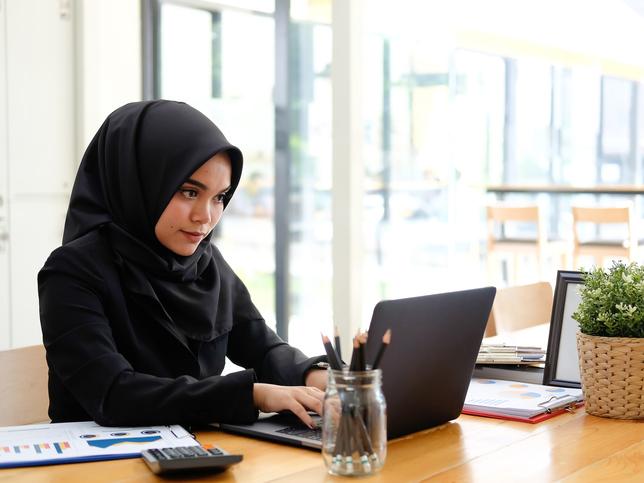
The humble whiteboard: the most flexible learning tool in your classroom
The humble whiteboard is often overlooked in favour of PowerPoint presentations and other digital materials. However, it offers unique advantages that can significantly enhance teaching and learning in higher education, especially in smaller classes with 30 or fewer students, while also avoiding any technological challenges that may arise when using other digital tools. In fact, the slower pace that whiteboard use requires can reduce cognitive overload for students and promote reactive teaching and interaction between teachers and students and their peers. This resource aims to provide practical advice using whiteboards to enhance student-centred learning, collaborative learning, scaffolding and active learning.
Embracing student-centred learning
Student-centred learning focuses on placing students at the heart of the educational experience, tailoring activities to their needs, abilities and interests.
How to promote it:
Interactive discussions: encourage students to come up to the whiteboard and contribute their thoughts during discussions. For instance, when discussing a new topic, ask students to write down what they already know and what they hope to learn. This can guide the lesson based on their interests and existing knowledge.
Problem-solving: present a complex problem on the whiteboard and have students work in small groups to solve it. Each group can come up and write their solution, which fosters a sense of ownership and active participation in the learning process. This also provides the opportunity for more scaffolding and immediate feedback from both the teacher and the student audience.
Quick feedback: use the whiteboard for real-time polls or feedback. For example, after a lecture segment, ask students to rate their understanding or pose any questions they have by writing on the board. This immediate feedback helps tailor the ongoing lesson to address any gaps in understanding. While many teachers may use digital tools to conduct polling, using the whiteboard prevents any technological challenges and fosters interactivity because students will need to raise their hands or voices to participate.
Fostering collaborative learning
Collaborative learning encourages students to work together to solve problems, complete tasks or understand new concepts, promoting peer-to-peer learning and social interaction.
- Resource collection: Teaching strategies to enhance learning
- How to teach critical thinking to beginners
- Four ways active learning can transform learning experiences
How to encourage it:
Group activities: assign tasks to small groups and use the whiteboard to display each group’s progress. For instance, during a case study analysis, each group can present its findings on a section of the whiteboard. This visual representation allows other groups to see different perspectives and approaches.
Peer teaching: encourage students to teach each other by presenting their ideas or solutions on the whiteboard. For example, after a lab experiment, each group can summarise their methods and results on the board, facilitating a class-wide review and discussion.
Collaborative concept mapping: use the whiteboard to create a collaborative mind map on a particular topic. Students can add to the map, building connections between concepts. This activity not only reinforces understanding but also highlights the interconnectedness of different ideas.
Implementing scaffolding techniques
Scaffolding involves providing structured support to students as they learn new concepts, gradually removing this support as they become more proficient.
How to apply it:
Step-by-step problem-solving: use the whiteboard to break down complex problems into manageable steps. Solve the first few steps together with the class, then gradually let students take over. For example, when teaching a difficult mathematical concept, work through the initial steps on the board and then ask students to complete the problem.
Visual aids: draw diagrams, charts or timelines on the whiteboard to help illustrate complex concepts. For instance, in a history class, create a timeline of events that students can add to as they learn more details.
Interactive summaries: at the end of a lesson, use the whiteboard to summarise key points. Have students contribute to this summary, adding what they found most important. This not only reinforces learning but helps students synthesise information.
Promoting active learning
Active learning requires students to engage directly with the material, often through activities that promote critical thinking and problem-solving.
How to encourage it:
Think-pair-share: write a thought-provoking question or problem on the whiteboard. Have students think about it individually, then discuss it with a partner and finally share their insights with the class by writing on the board. This technique promotes deep thinking and reveals diverse viewpoints.
Interactive demonstrations: use the whiteboard to set up and work through demonstrations. For example, in a science class, illustrate an experiment’s process on the board, highlighting key steps as you perform them.
Real-time problem solving: present problems during the lesson and invite students to come up and solve them on the whiteboard. This can be particularly effective in subjects such as mathematics or physics where step-by-step solutions are crucial.
Incorporating whiteboard use into small classes can significantly enhance student engagement and learning outcomes. By focusing on student-centred learning, collaborative learning, scaffolding and active learning, educators can create a dynamic and interactive classroom environment. I encourage you to revisit these basic teaching techniques and experiment with other ways to use the ubiquitous, yet often overlooked, whiteboard and make learning more engaging and collaborative.
Alan Meek is an educational developer at the Academy of Future Education, Xi'an Jiaotong-Liverpool University.
If you would like advice and insight from academics and university staff delivered direct to your inbox each week, sign up for the Campus newsletter.




